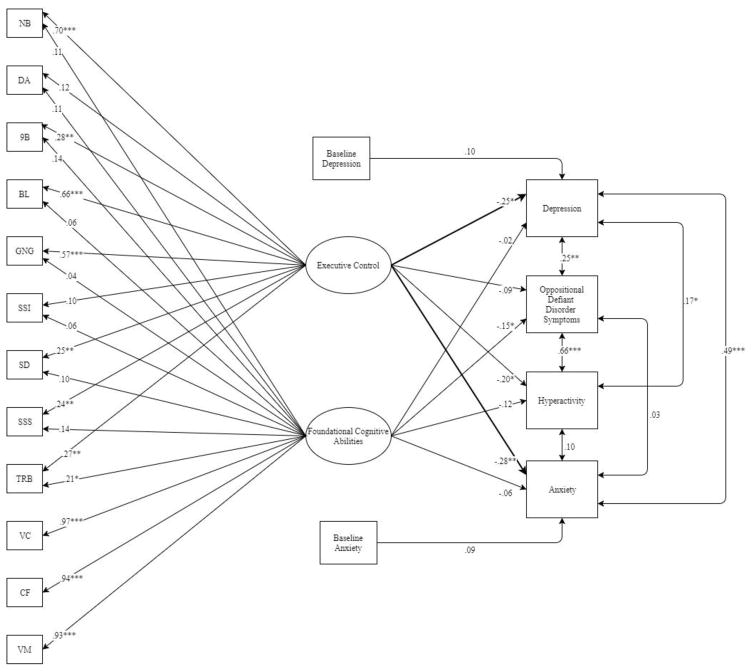Figure 1.
Bifactor model with preschool executive control and foundational cognitive abilities predicting depression and anxiety symptoms in elementary school.
Note: Control variables included in the model that are not depicted in the figure include maternal education, child sex, preschool effortful control, preschool ODD symptoms, preschool ADHD symptoms, Life Stressors and Social Resources Inventory (LISRES) Negative Life Events scale, parent-report of family history of depression, and parent-report of family history of anxiety.
*p < .05, **p < .01, ***p < .001
Structural Model Fit: RMSEA = .03, CFI = .99, TLI = .98, SRMR = .04
Predictive Model Fit: RMSEA = .06, CFI = .86, TLI = .83, SRMR = .10
NB = Noisy Book; DA = Delayed Alternation; 9B = 9 Boxes; BL = Big Little Stroop; GNG = Go-No-Go; SSI = Shape School Inhibit; SD = Snack Delay; SSS = Shape School Switch; TRB = Trail Making Test; VC = Verbal Comprehension; CF = Concept Formation; VF = Visual Matching

